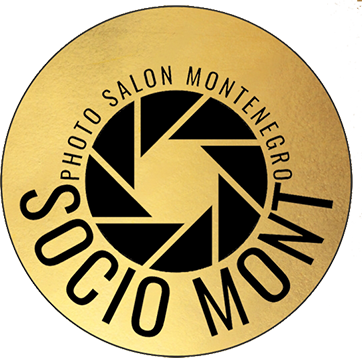Nature (color and monochrome)
Photojournalism (color and monochrome)
Face and Body (color and monochrome)
World in Focus (color and monochrome)
Open Color (only color). Monochrome images may not be entered in Open Color sections.
Open Monochrome (only color). Color images may not be entered in Open Mono sections
FIAP Monochrome Definition
A black and white work fitting from the very dark grey (black) to the very clear grey (white) is a monochrome work with the various shades of grey. A black and white work toned entirely in a single colour will remain a monochrome work able to stand in the black and white category; such a work can be reproduced in black and white in the catalogue of a salon under FIAP Patronage. On the other hand a black and white work modified by a partial toning or by the addition of one colour becomes a colour work (polychrome) to stand in the colour category; such a work requires colour reproduction in the catalogue of a salon under FIAP Patronage.
PSA/FIAP Nature Definition
- Nature photography records all branches of natural history except anthropology and archaeology. This includes all aspects of the physical world, both animate and inanimate, that have not been made or modified by humans.
- Nature images must convey the truth of the scene that was photographed. A well-informed person should be able to identify the subject of the image and be satisfied that it has been presented honestly and that no unethical practices have been used to control the subject or capture the image. Images that directly or indirectly show any human activity that threatens the life or welfare of a living organism are not allowed.
- The most important part of a Nature image is the nature story it tells. High technical standards are expected and the image must look natural.
- Objects created by humans, and evidence of human activity, are allowed in Nature images only when they are a necessary part of the Nature story.
- Photographs of human-created hybrid plants, cultivated plants, feral animals, domesticated animals, human-created hybrid animals and mounted or preserved zoological specimens are not allowed.
- Images taken with subjects under controlled conditions, such as zoos, are allowed.
- Controlling live subjects by chilling, anesthetic or any other method of restricting natural movement for the purpose of a photograph is not allowed.
FIAP/PSA “Photojournalism Definition”
Photojournalism entries are images with informative content and emotional impact, reflecting the human presence in our world.
Content Guidelines
- The journalistic (story-telling) value of the image should receive priority over pictorial quality.
- Images that misrepresent the truth, such as those from events or activities arranged specifically for photography, or of subjects directed or hired for photography, are not eligible.
- When Human Interest is specified, those images depict a person or persons in an interactive, emotional or unusual situation, excluding sports action.
Editing Guidelines
Processing or editing must be limited to making the image look as close to the original scene as possible.
Allowed editing techniques:
- Cropping, straightening and perspective correction.
- Removal or correction of elements added by the camera or lens, such as dust spots, noise, chromatic aberration and lens distortion.
- Global and selective adjustments such as brightness, hue, saturation and contrast to restore the appearance of the original scene.
- Complete conversion of color images to grayscale monochrome.
- Blending of multiple images of the same subject and combining them in camera or with software (exposure blending or focus stacking);
- Image stitching – combining multiple images with overlapping fields of view that are taken consecutively (panoramas);
Editing techniques that are not allowed:
Removing, adding to, moving or changing any part of an image, except for cropping and straightening.
- Adding a vignette during processing.
- Blurring parts of the image during processing to hide elements in the original scene.
- Darkening parts of the image during processing to hide elements in the original scene.
- All conversions other than to complete grayscale monochrome.
- Conversion of parts of an image to monochrome, or partial toning, desaturation or over- saturation of color.
Photojournalism entries are:
- images with informative content and emotional impact,
- reflecting the human presence in our world.
- The journalistic (story-telling) value of the image should receive priority over pictorial quality.
- Images that misrepresent the truth, such as those from events or activities arranged specifically for photography, or of subjects directed or hired for photography, are not eligible.
FIAP World in Focus definition
Just as with travel and tourism pictures, this section encompasses the full range of photographic genres from architecture, culture, events, food, landscape, portraits, etc. A “WORLD IN FOCUS” image expresses the spirit of an era, the essence of a place or of a culture whether it is shown in an authentic scene or whether it is arranged. Digital manipulation to optimise an image in terms of finetuning of levels and colours is allowed as long as the image looks natural. The same applies for removal of dust or digital noise. Techniques that add, relocate, replace, or remove any element of the original image, except by cropping, are not permitted.
Face and Body definition
Center of interest is the human face and body in all its forms and manifestations. Portrait and fine art nude photography. Portraits of people of all colors, races, religions, the whole range of human feelings. Live photography, outdoor photography as well as studio portraits. Men, women, children. The human face as a reflection on emotion and life experience. Fine-art photography, taken outdoors or under studio conditions, full of idea, creativity, with a touch of erotic mood, which depicts the nude human body with an emphasis on form, composition, emotional content, and other aesthetic qualities.
